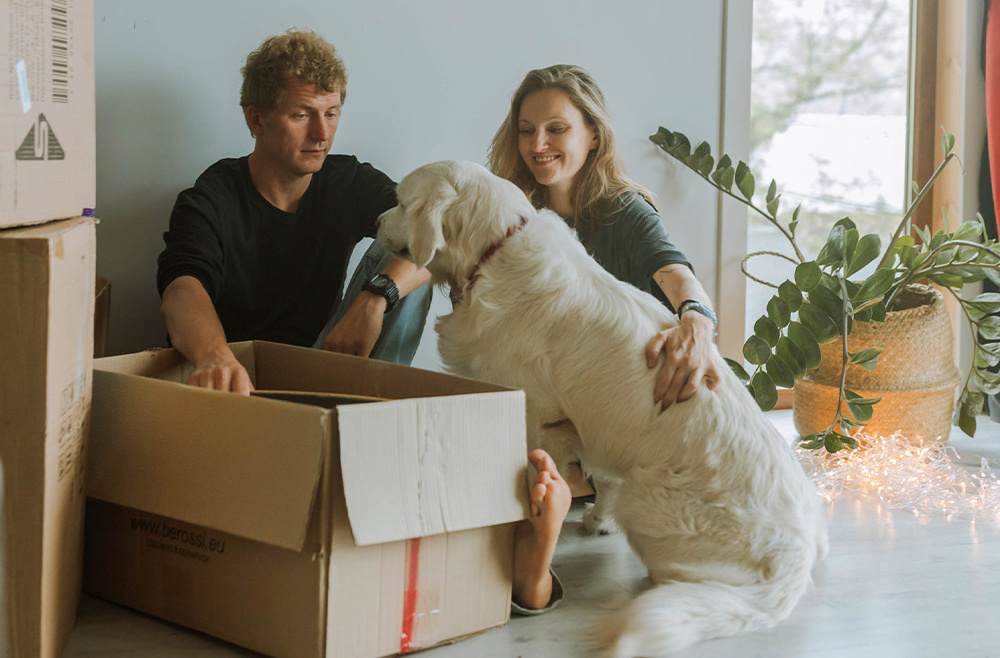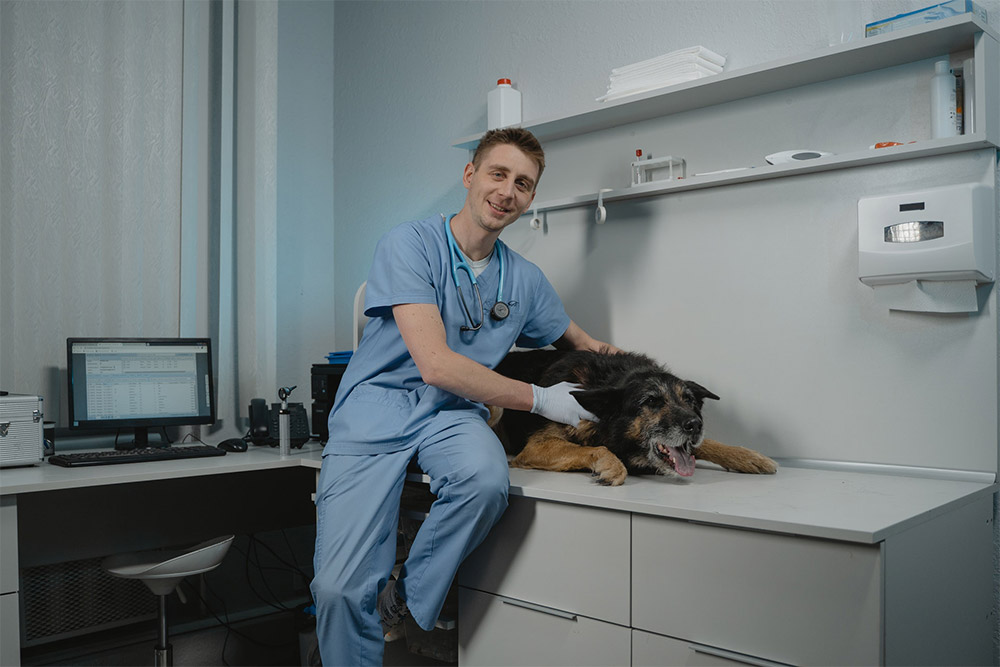Moving is notoriously stressful but when you have to move with your furry friend, things look even more challenging. Your dog or a cat can detect change but some pets are more sensitive than others when it comes to house relocation. If you’re wondering how to move without disturbing your four-legged family member, read on to find 8 tips for moving with pets.
Rules and regulations
Depending on whether you’re moving locally or long-distance, there may be a different set of rules and regulations you must follow. Some states require certain shots, and in others, your pet may have to quarantine for a while, so it’s important you check local regulations in a city or state you’re moving to. Also, reaching out to your new landlord is a must since you should make sure that pets are allowed – some landlords may apply additional fees while others will be completely flexible regarding the pet so do take a moment to inquire about this.
Moving boxes
If you start packing last minute and your pet notices that something unusual is going on, they may easily be disturbed by it. So what you’ll want to do is to get the moving boxes in advance and leave a few of them in your living area, just lying around like nothing is going on. By doing this, your pet will have the time to sniff and get used to boxes and they won’t get scared or stressed once you start packing. You can even offer them a treat once they start being curious about the boxes since this can create a positive association with boxes. Of course, your cat might be even more than excited about getting a new box to play with so do get an extra box or two just in case some of the boxes get “rearranged” by your cat.
Regular routine
Your pet will benefit from having a schedule and you probably have one already in place – feeding times, walking times, etc. While you as a pet owner certainly know this already, you may not know that changing the routine suddenly can bring extra stress upon your pet and make the whole moving process more difficult. So what you can do is to keep the routine unchanged and stick to your usual feeding and walking times, regardless of how busy you get with planning and organizing a move. Maintaining the schedule is extremely important so do get creative or find help if you must in those extremely busy days.
Health
Before you move, it’s important to visit a vet a do a checkup so you’d make sure your pet is in good health and ready to relocate with you. If you’re moving far from your current home then taking your pet’s medical records should also be on your to-do list so reach out to your vet a couple of weeks before your move to check available dates and schedule an appointment. This visit is also a good time to ask a vet if they can recommend someone trustworthy in your new area so you don’t have to wander around looking for a new vet once you move. However, if you’re moving to another state and you can’t get a recommendation, you can start researching online and reading reviews so you would find a new vet before your move takes place – it will give you peace of mind knowing that this task is taken care of. Your pet may have to take some required shots depending on the city or state you’re moving to so do take some time to arrange this while you’re organizing your relocation.
Update information
When you move house, you must change your address and update your info, and the same thing should be done for your furry friend too. You should update the microchip info and make sure you get a new identification tag for your pet.
Pet carrier
Once you research your transportation options and decide which way is the best to travel with your pet (airplane, car, etc.), you’ll want to find a suitable pet carrier. It should be sturdy and comfortable enough for your pet to be transported safely. Since pets are usually not too thrilled about the idea of getting into a carrier (people mostly use carriers for visits to a vet, so this doesn’t come as a surprise), you can try something different and use a carrier for a pleasant trip, like going to your pet’s favorite park, or anything else you know they enjoy. This could help relate the carrier to something enjoyable rather than something disturbing like getting shots at the vet.
New home
There are a couple of important things when it comes to your new home. First, you must secure the place and make sure it’s safe for your pet to explore. Secure the windows or other exists the pet could use to escape, and make sure any potentially dangerous areas are off-limits. Next, remove any dangerous items from your home − sharp items like scissors should be out of reach. If you’re moving with a cat, pay special attention that your new place doesn’t have some new plants – those gorgeous ivies, Lilies, and even your Aloe Vera can be toxic for felines. Safe exploration is crucial especially in the first couple of days or weeks while your pet is discovering a new space and making sure it’s as safe as your previous home.
Patience and pampering
The last thing you’ll want to do when moving with pets is to be patient and give them enough time to acclimate. Depending on your pet’s personality, they may take more or less time to get used to their new surroundings and feel safe and comfortable at your new home. More pampering may be extremely helpful after you relocate, so extra cuddles, a few extra treats, and favorite toys can go a long way when it comes to your pet adjusting to new surroundings. Don’t be too concerned if they behave a bit scared or unusual in those first days after moving as this is pretty normal, however, if you notice any excessive behaviors, make sure you contact the vet.
We hope you’ll find our tips for moving with pets helpful and have a stress-free move. When moving with pets, always hire a reliable NJ moving company. Contact Century movers and packers for any help with your local or long-distance move and tailored moving quotes for your specific needs.




